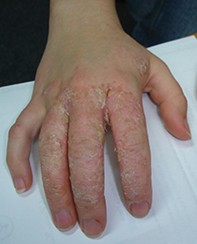Peer Reviewed
Feature Article Occupational health
Occupational contact dermatitis: suspect it, treat it, and refer if persistent
Abstract
Occupational contact dermatitis can have considerable impact at work and at home. Accurate and early diagnosis enables optimal management, and there may be multiple causes.
Key Points
- Occupational contact dermatitis can significantly affect a person’s quality of life. Early diagnosis, appropriate management and timely referral can improve prognosis.
- Irritant contact dermatitis is more common than allergic contact dermatitis. Both types may coexist and it may be impossible to differentiate them clinically.
- Young people with a history of eczema should be advised to take appropriate skincare measures as soon as they start work, in order to minimise their risk of contact dermatitis.
- People with a history of severe eczema affecting the hands should avoid occupations involving wet work, as this increases their risk of developing irritant contact dermatitis.
- There is no test for irritant contact dermatitis, which is diagnosed subjectively after allergic contact dermatitis has been excluded by patch testing.
- Immediate hypersensitivity reactions to proteins in latex and foods causes contact urticaria, which may also present as contact dermatitis. Prick testing is used to diagnose contact urticaria, although a radioallergosorbent test (RAST) is preferred if latex allergy is suspected because of the possibility of anaphylaxis with prick testing to latex.
Purchase the PDF version of this article
Already a subscriber? Login here.

